Hello lovelies!
If I tell you about Ancient Egypt, you’d probably think about the pyramids, pharaohs and beautiful queens. In a few words, you’d tell me that it’s the cradle of civilization. And you’ll be right.
But did you know that Ancient Egyptians were the ultimate beauty addicts?
Indeed, Ancient Egyptians were deeply inclined towards beauty rituals. Both men and women from every class took care of their appearance. Consequently, they left us a huge inheritance in this domain.
Actually, we still use some of their beauty techniques, even if we modernized some of them. Today, we’ll examine Ancient Egypt’s beauty secrets. You’ll notice that they’re still incredibly modern!
What was the Ancient Egyptian beauty philosophy?
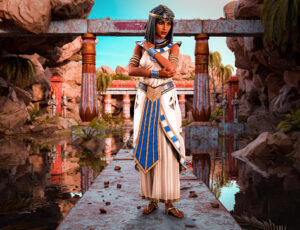
In Ancient Egypt, beauty rituals were dedicated to Hathor. She was the goddess of beauty, femininity, music, dance, joy, love, sexuality, and maternal care. Together with Isis, Hathor was the ultimate representation of feminine beauty. Consequently, all Egyptian women of every class tried to emulate her.
In this context, beauty had also a spiritual and philosophical side. Ancient Egyptians believed that cleanliness was next to godliness. Does it ring a bell?
That’s why both men and women took great care of their appearance. Being beautiful wasn’t only physical, but it represented a high spiritual commitment towards the Creator/the gods. That’s why they relied on a wise combination of principles, including:
- the observance of strict spiritual principles (i.e. the 42 laws of Maat)
- a balanced diet
- proper exercise
- daily grooming
- natural body and skincare
The ancestor of soap

As we know now, Ancient Egyptians were extremely clean. But did you know that they cleansed their bodies with a kind of soap? They cleanse their bodies with a paste made of natron, ashes, and clay. For the record, the first “soap” will be invented in Babylon.
Ancient Egypt’s beauty secrets: Milk and honey

I believe that this beauty secret from Cleopatra is recognized worldwide. Ancient Egyptians used to bathe in ass milk and honey. Thus, the bath would exfoliate and rejuvenate the skin, thanks to lactic acid. Also, they relied on the moisturizing properties of honey to get a smoother skin.
Do you want to replicate this bath without ass milk? Then, just replace the ass milk with coconut milk or full-fat milk. You’ll obtain the same results.
Also, please note that you can use milk and honey as a natural cleanser or as a facial.
Ancient Egypt’s beauty secrets: Dead Sea products
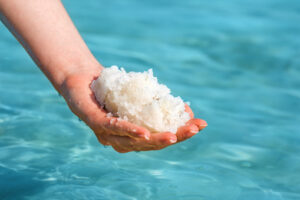
Did you know that Cleopatra wanted Mark Antony to yield Judea to her because of Dead Sea products? Indeed, Dead Sea products were adopted very easily in Ancient Egyptians’ beauty rituals. They used these products to treat, cleanse, and detoxify their bodies.
For instance, they used Dead Sea salt to exfoliate their skins. Also, Dead Sea mud had a special place as a purifying face mask.
Recognized for their healing properties, Dead Sea products are rich in beneficial minerals, such as:
- magnesium
- iodine
- calcium
- sodium
- potassium
- bromide
- zinc
Ancient Egypt’s Beauty Secrets: Vegetable oils
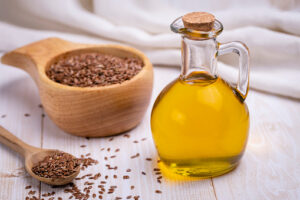
Ancient Egyptians used oils to moisturize their face, body, and hair. They especially favored black seed oil, sesame oil, almond oil, castor oil, and moringa oil. These vegetable oils helped them to keep their skins smooth and wrinkle-free.
Ancient Egypt’s Beauty Secrets: Khol
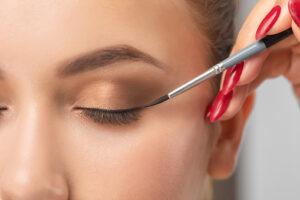
Khol is one of the most famous beauty secret from Ancient Egypt. It was created by mixing soot with galena, a blue-grey minera form of lead sulphide. It had cosmetic, spiritual and medical properties. Indeed, khol was used as a deterrent for flies and to protect eyes from the sun and infections. Also, Ancient Egyptians used khol to ward off evil influences (i.e. eye of Horus).
Ancient Egypt’s Beauty Secrets: Eyeshadows
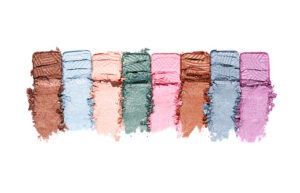
Ancient Egyptian invented eyeshadows! They created a green eyeshadow by mixing crushed green malachite stone with animal fat or vegetable oils.
Like khol, Ancient Egyptian believed that their green eye make-up had the ability to ward off evil influences and various illnesses.
Red ochre

Red ochre was the main pigment to stain Ancient Egyptians’ lips and cheeks. They used it as the equivalent of our current lipstick and blush. Red ochre was a naturally tinted clay that Ancient Egyptians mined and left dry under the sun.
Then, they ground it, mixed it with water and applied it with a brush on their lips and cheeks. Also, it was likely to be used as a shield from the sun and infections as well.
Burnt almonds
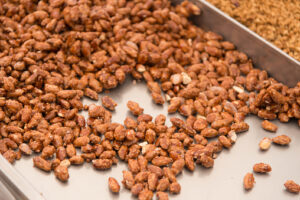
Did you think that Fenty Beauty invented eyebrow make-up? Then, think again! Indeed, Ancient Egyptians already underlined their eyebrows with burnt almonds.
Sugaring
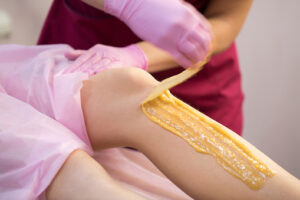
Having a hairless body was one of the main beauty standards of Ancient Egypt. Also, priests shaved all their body hairs, including their eyebrows! This was a way to get closer to the gods. Moreover, Ancient Egyptians believed that shaving their body hair distinguished human beings from animals. Consequently, they relied on sugaring.
To remove unwanted body hair, they used a mixture of sugar, lemon, and water. This technique is still widely used today! Through sugaring, they kept their skin smooth, soft…while obtaining the hairless result they wanted!
Wigs and extensions

Because of the harsh climatic conditions, most Ancient Egyptians used to shave their hair. For priests and priestesses, shaving their hair was required as a sign of respect for the Divine.
However, they still wanted to have fun with their hair. Enter wigs and extensions! All Egyptians used wigs in their daily lives. But while rich people used human hair, the modest classes purchased wigs made of vegetable fibers.
Also, Ancient Egyptians adorned their wigs and extensions with beads, flowers, ribbons, and jewels. Using fake hair didn’t mean that you couldn’t be stylish anymore!
Nevertheless, wigs were an overall hygienic solution to keep lice at bay.Thus, Ancient Egyptians really knew how to combine usefulness and pleasure.
Henna
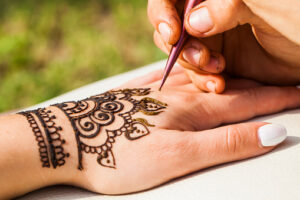
Ancient Egyptians used henna to paint their nails, while decorating their hands as well. Unlike modern nail lacquers, henna also conditions the nails while promoting their growth.
Bonus: Ancient Egyptians’ diet

Ancient Egyptians ate a balanced diet that was a kind of Mediterranean diet. Indeed, their diet included bread, vegetables, fruits, herbs, and spices. They ate minimum meat, as it was expensive. Therefore, they only ate red meat during specific festivals and ritual occasions.
To conclude, Ancient Egypt’s beauty secrets include rituals that we still used today. Though we have transformed beauty and make-up products, our beauty rituals can be tracked back to Ancient Egypt. So, we can be thankful to them for that.
Well, that’s all for today! Do you use of these Ancient Egypt’s beauty secrets in your daily routine? What is your favorite Ancient Egypt’s beauty secret? Share your answers in the comments!
Take care!
Want more content from me? Join my newsletter today and received the latest updates of my website. Also, you’ll receive a wonderful gift in your email!
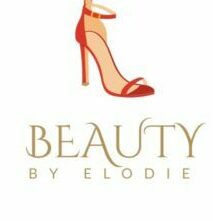




Thank you very much for this valuable detailed post about Beauty Secrets From Ancient Egypt. This is really a very valuable post for girls. Because I have seen from the pictures that Egyptian people are very beautiful. I will definitely send this post to my sister. She will surely thank me very much. Keep posting like this.
Thanks!
This was so enjoyable to learn about all these beauty connections back to ancient Egypt. I was aware of many of them, like kohl, sugaring, henna and milk and honey treatments. But I wasn’t aware that basically modern facial makeup roots back to those times. All the pictures I’ve seen of Cleopatra with her dark kohl, red lips and green eyeshadow stand out in my mind. I always wondered if there was some specific reason for green shadow in particular. And now I’ve learned it’s related to the Egyptians’ desire to “ward off evil influences and various illnesses.”
I guess in many ways, today’s society is not much different than the ancients in terms of wanting to look good through the use of makeup, hair and beauty treatments. Now we know that we have the ancient Egyptian culture to thank for all many modern day beauty rituals. Thanks for a sharing these beauty secrets!
You’re welcome Lee! And thanks for your beautiful comment!
Thank you for this shared information on beauty from Ancient Egypt. I think anyone reading this post can adopt a thing or two from this guide.
What really stood out in my mind is ancient Egyptians were people living a minimalistic lifestyle and took what mother nature offered to them to make themselves beautiful and happy. Thanks for sharing.
You’re welcome Mazie!
You are correct. Egypt symbolizes power, science and discoveries. Although they are well known for rituals, I believe a lot of it was under discoveries. So also is the world of beauty. The Egyptians dedicated time to cleanliness, a balanced diet and daily grooming. These were more discoveries than rituals in my opinion. Not to say that I do not respect the place of rituals.
Interesting point of view…
Good post. One of the points that stood out for me was the use of black seed oil for skin treatment. Black seed oil is used internally for its anti-inflammatory properties. I never thought it could be utilized exteriorly to fight inflammation and other skin problems. Black seed oil includes vitamins A, B, and C, which help the cells retain moisture, and elasticity and fight the damaging free radicals inside and out. It also contains fatty acids, which reduce UV damage and some signs of aging.
Wow, thanks for the valuable information!
I have been to Egypt while i was stationed on the port of Alexandria. I took a bus to see the pyramids and the markets were so colorful with much of what you expressed in your research. thank you for the amazing post and allowing me to re live the experience
You’re welcome!
I have to start with a question. Did you really mean “ass milk”, if so what is that? I am asking because I would consider making this soap for myself to try, the Egyptians had amazing skin! How would I go about getting it? I can also try the alternate.
I was surprised at the items you listed and the availability of them for us to get. It’s so easy to buys off the shelf, and giving the businesses $. I think I prefer some of these options to caring for my skin! I am certainly going to try the soap and the oils from black seed or sesame.
Sea salts are great for exfoliating. Currently I use gloves or Epsom salts, this gives me another option to try.
Again, the Egyptians had amazing skin and I’m excited to try some of these ideas!
Hello thanks for your comment ! Ass milk is actually donkey milk…
It was fascinating to read about all the aesthetic ties to ancient Egypt. Many of them, such as kohl, sugaring, henna, and milk and honey treatments, were familiar to me. But I had no idea that current facial makeup had its roots in those times. All of the images I’ve seen of Cleopatra with her black eyeliner, crimson lips, and green eyeshadow have stuck with me. I’ve always wondered whether there was a purpose for the green shadow in particular. And now I know it has something to do with the Egyptians’ wish to “fend off bad influences and different ailments.”
Thanks for the comment !